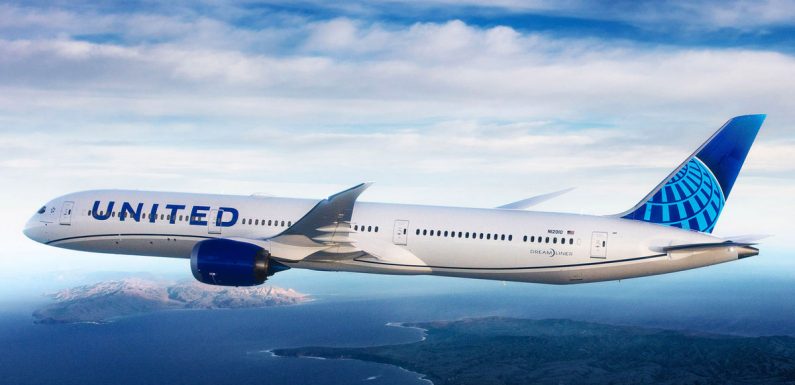
With its record order last week of up to 200 Boeing 787 Dreamliners, United Airlines rolled out a new tagline to describe its position as the largest transoceanic carrier among U.S. airlines.
“As we’re coming out of the pandemic, we have become the de facto flag carrier in the United States,” CEO Scott Kirby said during a Dec. 13 signing ceremony at Boeing’s production facility in Charleston, S.C.
While the term flag carrier, which historically refers to an airline that is or has been owned by the government, may be hyperbolic, the order does reinforce United’s strategy to emerge from the pandemic as the clear long-haul U.S. leader.
“It is certainly reflecting huge confidence in the full return of international airline connectivity,” said Gary Leff, who pens the View From the Wing blog.
Richard Aboulafia, managing director of the aerospace consulting firm AeroDynamicAdvisory, added that United is “really using orders to message their future.”
Both analysts also said that the order, the largest Boeing has ever taken of 787s, will serve to secure United’s ability to pursue its international growth ambitions, even if supply chain challenges continue to slow Boeing manufacturing in the years ahead.
“You want to be first in line,” said Aboulafia, adding that with United’s commitment, Boeing is likely to prioritize its order over smaller deliverables. (Replacing Russian-made titanium castings and forgings, a move that became necessary when Boeing halted such purchases shortly after Russia invaded Ukraine last February, is Boeing’s most challenging supply constraint, Aboulafia added.)
Under last week’s order, United is slated to take delivery of at least 100 787s between 2024 and 2032, with an option to take as many as 100 more.
United can choose among the four 787 variants (the 787-7, -8, -9 and -10), providing the airline with flexibility to tailor the order to future route plans.
The 100 firm orders will facilitate a plan by United to retire its remaining 42 Boeing 767 widebodies by 2030 and the majority of its Boeing 777 fleet by 2032.
United leads in Europe, Asia and Australia
The options, should United exercise them, could enable the carrier to seize an additional share edge in the transpacific and transatlantic markets.
In the Asia and Australia markets, United has long been the U.S. leader. But the carrier’s decision not to retire any widebody types during the pandemic will enable it to grow that edge with the recent return of unfettered travel to most of Asia and to the Australia/New Zealand market.
United has more than 1.75 million seats scheduled to Asia, Australia and New Zealand in the first half of 2023, compared with 719,000 scheduled by Delta and American’s 403,000, Cirium data shows.
In overall transatlantic seat offerings, United also edged past long-time leader Delta this year, though Delta has slightly more seat offerings scheduled for Europe than United does during the first half of next year.
Along with last week’s widebody order, United also exercised purchase options for 44 narrowbody 737 Max aircraft for delivery by 2026 and ordered 56 more Max aircraft for delivery in 2027 and 2028.
Overall, United now expects to take delivery of approximately 700 new narrowbody and widebody aircraft by the end of 2032.
Are United’s large aircraft orders prudent?
The orders made Wall Street skittish. United stock dropped approximately 7% on Dec. 13, fueled by cost concerns.
Even before the lion’s share of the 787s begin arriving, the company expects capital expenditures of $20 billion over the course of 2023 and 2024 as it takes delivery of an anticipated 279 planes.
“I think it is an open question, whether this is a smart investment,” Leff said.
Source: Read Full Article









